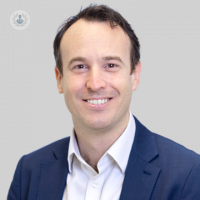All about limb lengthening surgery
Written in association with:Limb lengthening surgery, also known as limb equalisation surgery, is a specialised procedure aimed at correcting significant differences in limb lengths. This condition can arise due to various factors, such as congenital anomalies, growth discrepancies following trauma, infections affecting bone growth, or developmental deformities. The procedure is crucial not only for aesthetic reasons but also for restoring functionality and balance to the patient's body. In his latest online article, Mr Jonathan Wright gives us his insights.

Reasons for limb lengthening surgery
The need for limb lengthening surgery typically arises when one limb is noticeably shorter than the other, affecting the individual's gait, posture, and overall quality of life. Patients may present with congenital limb length differences or develop them later due to trauma or other growth disturbances.
Methods of limb lengthening
External fixators: This is the most common method used, involving the use of external devices such as the Illizarov apparatus or Taylor Spatial Frame. These devices are attached to the affected limb with pins and wires, allowing controlled, gradual bone distraction over several weeks to months. This also allows correction of any deformity simultaneously in a controlled manner.
Internal lengthening devices
In certain situations, internal devices like lengthening nails are considered. These are implanted within the bone and can adjust the length without the need for external hardware. Due to the impact on the growing areas of bone, this method is usually only considered in older children at the end of their growth.
Procedure and recovery process
Performing limb lengthening surgery: The surgery begins with carefully planned bone cuts, followed by fixation of the external device. The bone is divided during the operation, and then the distraction phase is initiated according to a programmed schedule, typically extending at a rate of about a millimetre per day.
Recovery and rehabilitation
Post-operatively, patients undergo a monitored recovery process involving pain management, physiotherapy, and regular check-ups to ensure proper bone healing and limb alignment. Physiotherapy plays a crucial role in maintaining joint mobility and preventing muscle contractures during the lengthening phase. Once the desired length is achieved, patients continue with rehabilitation to regain strength and function in the affected limb.
Risks and complications
While limb lengthening surgery is generally safe, it carries certain risks including nerve or vascular injury, infection, and complications related to the external fixation device. Infection is a risk and the family are taught to monitor for this as well as through checks at regular appointments. Close monitoring for the rate of new bone formation and range of motion of the joints is essential to allow adjustments in treatment with the rate and rhythm of correction. Additionally, precautions against blood clots and careful management of post-operative pain are crucial components of the recovery process.
Long-term outlook
Patients undergoing limb lengthening surgery can expect a gradual return to normal activities over several months following the removal of the external fixator or internal device. The ultimate goal is to achieve balanced limb lengths and restore function so that patients can enjoy improved mobility and quality of life.
Mr Jonathan Wright is an esteemed consultant paediatric orthopaedic and limb reconstruction surgeon. You can schedule an appointment with Mr Wright on his Top Doctors profile.


